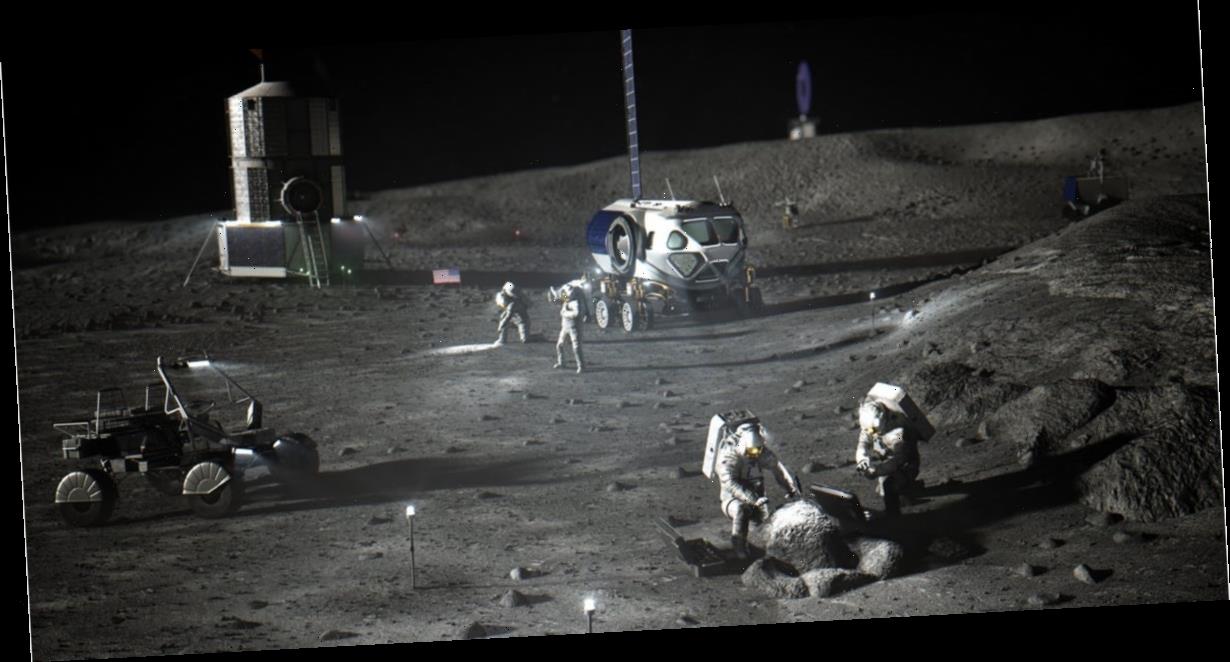- NASA recently unveiled the plan for its Artemis program, a series of missions that would return astronauts to the moon.
- A new study reveals how much radiation astronauts are exposed to on the lunar surface: a daily dose about 200 times greater than on Earth.
- NASA wants to build a base on the moon, but the new data suggests it'd be safest to bury such a base under 2.5 feet of moon dirt to protect astronauts from radiation.
- Visit Business Insider's homepage for more stories.
NASA wants to build a permanent base on the moon by the 2030s — a place astronauts could stay for extended visits at the lunar south pole.
But according to a new study, any astronauts who go there would face levels of radiation nearly three times higher than what the astronauts on the space station deal with. In high enough doses, long-term exposure to this cosmic radiation poses significant health risks, including cataracts, cancer, and central nervous system diseases.
The new research, published last week in the journal Science, calculates for the first time what a moon-walker's daily dose of radiation would be — a number not previously known.
"If you think about people staying on the moon for extended periods of time, say on a scientific research station for a year or two, then these levels start getting problematic," Robert Wimmer-Schweingruber, a co-author of the new study, told Business Insider.
The solution, he said, would be for any lunar base to be built beneath the moon's surface.
"Covering your habitat with sufficient amounts of lunar dirt should do the trick," Wimmer-Schweingruber said.
The first study to calculate radiation on the moon
Apollo astronauts carried radiation-measuring instruments on their missions in the 1960s and 70s, but those dosimeters could only tell scientists the total amount of radiation the astronauts were exposed to throughout their time in space. That's from blast-off to landing and everything in between — not just on the moon.
Wimmer-Schweingruber's team was able to document daily radiation levels on the moon's surface by analyzing data collected by China's Chang'e 4 spacecraft, which landed in January 2019.
A tool aboard Chang'e 4 measured the total amount of radiation it had absorbed, then relayed that radiation data back to Earth via satellites. Then it was simple arithmetic: The researchers divided that total radiation dose by the amount of time the tool had collected data to calculate the daily total.
"The radiation exposure we have measured is a good benchmark for the radiation within an astronaut suit," Thomas Berger, another co-author of the study, said in a press release.
200 times the radiation we experience on Earth
Radiation is a catch-all term — in Wimmer-Schweingruber's words, it simply describes "energy being deposited into places in your body that it shouldn't be, to sometimes ill effect."
On Earth, that energy can come in the form of light and heat, which we can feel, as well as sources like X-rays, which we can't. The planet's strong magnetic field and a thick atmosphere shield the surface from most cosmic radiation, , however, which comes from galactic cosmic rays, solar particles speeding away from the sun, neutrons, and gamma rays.
When people fly on planes, they soar above part of that atmospheric shield, so the dose of radiation they're exposed to increases. Astronauts on the moon, meanwhile, face a daily radiation level five to 10 times higher than Transatlantic fliers, since the moon doesn't have the shield that Earth does.
So an astronaut on the lunar surface would be exposed to 1,369 microsieverts of radiation per day — about 200 times higher than the daily level on Earth.
"This is a considerable exposure," Wimmer-Schweingruber said.
That's why his team suggests burying lunar bases.
"Ideally you'd like to be under as much material as is equivalent to Earth's atmosphere," Wimmer-Schweingruber said, adding, "an optimal depth is 30 inches of lunar soil."
Source: Read Full Article
